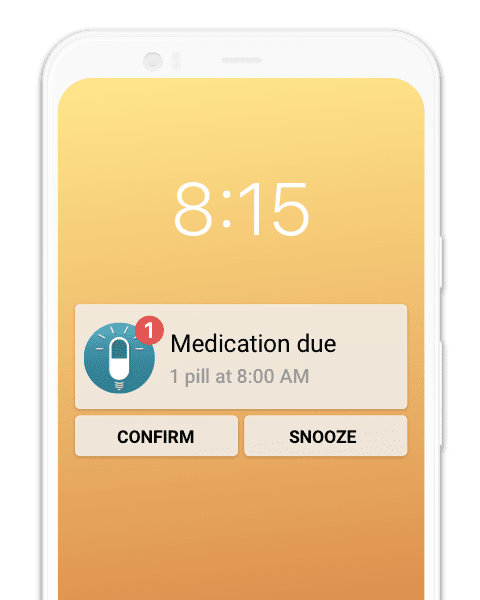Chronic obstructive pulmonary disease (COPD), which includes emphysema and chronic bronchitis, makes breathing difficult for those diagnosed with it. COPD can limit your ability to work or even perform simple daily tasks. On World COPD Day, November 18, we explain the symptoms, causes and treatment of this disease.
What is COPD?
Chronic obstructive pulmonary disease (COPD) is a chronic respiratory disease that causes permanent airway obstruction. It is characterized by a progressive decrease in breathing, linked to several factors:
First, the walls of the bronchi and bronchioles become thicker and the cells produce more mucus. The airways then become narrower and more congested;
The small bronchi (bronchioles) and alveoli of the lungs then become deformed and lose their elasticity;
The pulmonary alveoli, which allow gas exchange during breathing, are destroyed (emphysema).
What causes COPD?
In over 80% of cases, the cause of COPD is smoking. The risk increases with the length of time and intensity of smoking. Other contributing factors are:
- Passive smoking
- Certain environmental factors (air pollution and indoor pollution)
- Occupational exposure to toxic substances or irritants (coal dust, silica dust)
- Exposure to organic particles (plants, moulds) in the textile industry and the agricultural sector
- A rare genetic disease (alpha 1 antitrypsin deficiency responsible for pulmonary emphysema and liver disorders leading to cirrhosis)
What are the symptoms of COPD?
COPD can develop for years without any noticeable symptoms. Early diagnosis can slow down the deterioration of lung function and the progression of the disease.
The most common symptoms are:
- Fatigue
- Frequent coughing
- Wheezing
- Frequent lung infections
- Change in appetite and weight loss
- Feeling of tightness in the chest
- Shortness of breath that gets worse over time
- Shortness of breath during physical activity
Serious symptoms that require urgent medical attention include:
- Fainting
- Inability to communicate
- Difficulty catching your breath
- Increased heart rate
- Bluish or greyish nails or lips
- Swelling of ankles, feet and legs
How does COPD progress?
The evolution of COPD is marked by :
- Progressive deterioration in lung function
- Exacerbations which can be severe
- Continuing to develop exacerbations that can be severe
- Reduced daily activity, especially due to the lack of exercise
- A reduction in daily activity, particularly related to dyspnoea (difficult or laboured breathing)
The progression of the disease can lead to chronic respiratory failure. The respiratory system is then unable to perform its function and the patient must be put on oxygen. Prevention, screening, early diagnosis and treatment of COPD are essential to prevent this progression.
The 4 stages of COPD
According to the Global Initiative for Obstructive Lung Disease, there are four stages of COPD:
Stage I: Mild COPD. Lung function is starting to decline but you may not notice it.
Stage II: Moderate COPD. Symptoms progress, with shortness of breath developing upon exertion.
Stage III: Severe COPD. Shortness of breath becomes worse and COPD exacerbations are common.
Stage IV: Very severe COPD. Quality of life is gravely impaired. COPD exacerbation can be life-threatening
Despite, the guidelines to COPD stages, COPD is not a "one-size-fits-all" disease. These levels, or stages, of COPD are just a broad guide to provide a clearer understanding. There are several different factors that go into helping you and your health care provider understand what type of COPD you have and how best to treat it and manage it.
How is COPD treated?
If you have COPD, there are several things you can do to reduce symptoms and improve your quality of life.
For smokers, the most important part of the treatment is to stop smoking. For non-smokers, this means avoiding tobacco smoke and other air pollutants at home and at work. Some symptoms, such as coughing or wheezing, can be treated with medication. In severe cases, a portable oxygen tank may be necessary if the oxygen level in the blood is low.
Pulmonary rehabilitation, a personalized treatment programme, can teach you how to manage COPD symptoms to improve your quality of life. This can include learning how to breathe better, how to conserve your energy and what types of food and exercise are right for you.
Lung infections can cause serious problems for people with COPD. It is therefore important to prevent these lung infections. Some vaccines, such as those against flu and pneumonia, are particularly important for people with COPD.
Managing COPD
Although COPD is a progressive disease that can worsen over time, COPD is treatable. With proper management, most people with COPD can achieve good symptom control and quality of life, as well as reduced risk of other associated conditions. Because your lungs are weakened, you need to avoid anything that might overwork them. Here's a list of things to consider when adapting your lifestyle.
Stop smoking
If you are having trouble quitting smoking, ask your doctor about smoking cessation programs. Try to avoid second-hand smoke, chemical fumes, air pollution and dust.
Exercise
A little exercise every day can help you stay healthy. You can work with your doctor to develop a personalized exercise program.
Treat other diseases
If you have other chronic diseases in addition to COPD, it's important to manage them too, including diabetes and heart disease.
Be prepared for emergencies
Carry emergency contacts and numbers. Include information about the medicines you are taking, and the doses on you. Programming emergency numbers into your phone can also be useful .
Take a look at some of the other posts on the MyTherapy blog



